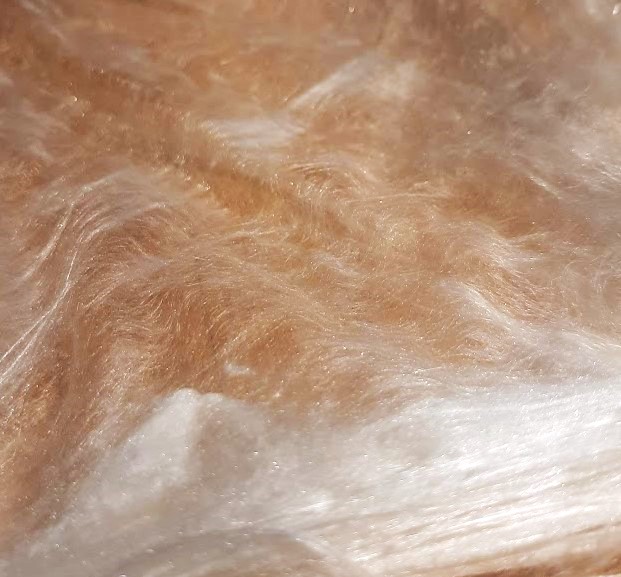Processing silk
A third batch of cocoons was messily processed today. For about an hour, a little pan full of soapy water and mushy silk simmers away, filling the air of my studio apartment with the leafy smell of silkworm. Not that any silkworms were harmed in the process! The cocoons' original inhabitants long since vacated the premises, spending their final days fluttering and mating to their heart's content. Still, the cocoons' architecture leaves no doubt as to its creators. Their earthy smell always bring me back amongst the silkworms.
The silk harvesting process involves more fiddling with scalding water than I'd like, but after being stretched over a little wooden frame, soaked in a special wool soap, and then rinsed a final time, the result is glossy silk that's (hopefully) ready for spinning into a proper yarn! I'm still working on a spinning strategy, as my attempts with the drop spindle have been less that ideal. Big names in the industry are being approached for their expertise!
So what exactly is this bizarre project, a sane person is likely to ask. And rightly so. I've been rearing silkworms on a biyearly basis for about fifteen years now.. Hundreds of silkworms have been born in that time. It's an easy enough hobby, lasting only a month or two, given the brief lifespan of silkmoths, but the draw—to watch a rather sorry little caterpillar grow, flourish, and then suddenly build a marvellous silk cocoon—pulls me back in every time. Even as a teenager I'd always been curious about trying to somehow harvest that silk, but I lacked the momentum. Now that I'm a proficient knitter, however, I have a tangible goal in mind: I'm determined to knit a (small) garment with my own home-spun, animal-friendly silk. And this year we're close to reaching that goal!

The first, and perhaps most labour-intensive step of the process is of course the rearing of the silkworms. I will at some point write about that thrilling process, but for now let's start at the end of the silkworm lifecycle. It's June or July, and the last of the moths have mated and laid their eggs. A hundred or so empty cocoons lie waiting, expectant. Using a blend of washing soda and dish soap (the exact ratios still await proper experimentation), I boil a handful of cocoons in a little pan. As the silkworm glue holding things together begins to dissolve, the cocoon quickly turns into a silky mush. I pull out one cocoon at a time, plucking out any impurities, and then stretch the mass over a frame, trying to get the silk to be divided as evenly as possible. After about fifteen or twenty cocoons the layers have created an opaque surface, which I peel off the frame and soak in hot water with wool shampoo. The goal here is to soften and strengthen the silk fibres. Once thoroughly soaked, I hang the hankie out to dry. The end-result is seen below!
This is as far as I've gotten, and I'm steadily working my way through the cocoons from this year's generation of silkworms (about one hundred and fifty—I kept busy). The missing step now is spinning the fibre into a yarn, and this is where I am a little stumped. Experiments with a drop spindle have been mixed in their success, so I'm hoping to meet up with a professional spinner and ask her what she recommends. Exciting times ahead!